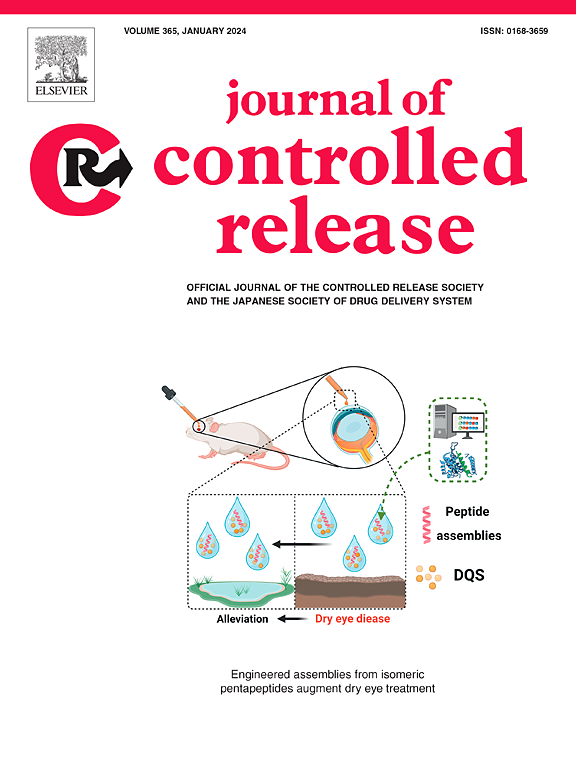A ROS-responsive nanoprodrug-engineered phage biotherapy for precision treatment of multidrug-resistant Gram-negative bacterial pneumonia
IF 10.5
1区 医学
Q1 CHEMISTRY, MULTIDISCIPLINARY
引用次数: 0
Abstract
Multidrug-resistant Gram-negative bacteria (MDR-GNB) pose a significant threat to global healthcare, causing severe morbidity and mortality rates in pneumonia cases. Despite the effectiveness of polymyxins, their clinical use is limited by toxicity and emerging bacterial resistance. Here, we describe a precisely targeting, biohybrid therapeutic platform that combines a polymyxin B-based prodrug nanosystem with an engineered phage. This biohybrid system enables the accumulation of polymyxin B at pathogens and its release in a reactive oxygen species (ROS)-triggered manner at inflamed sites. In vitro and in vivo studies demonstrate that this system shows robust lung distribution and tissue retention, effectively eliminating pathogens, reducing oxidative damage, and alleviating inflammation in a model of bacterial pneumonia. Our findings highlight the potential of this phage-prodrug biohybrid nanoplatform for targeted antibiotic delivery, offering a therapeutic paradigm against infectious diseases caused by MDR-GNB.

耐多药革兰氏阴性菌(MDR-GNB)对全球医疗保健构成重大威胁,在肺炎病例中造成严重的发病率和死亡率。尽管多粘菌素很有效,但其临床应用却受到毒性和新出现的细菌耐药性的限制。在这里,我们介绍了一种精确靶向的生物混合治疗平台,它将基于多粘菌素 B 的原药纳米系统与工程噬菌体相结合。这种生物杂交系统能使多粘菌素 B 在病原体处积聚,并在发炎部位以活性氧(ROS)触发的方式释放出来。体外和体内研究表明,该系统具有强大的肺部分布和组织滞留能力,能在细菌性肺炎模型中有效清除病原体、减少氧化损伤并缓解炎症。我们的研究结果凸显了这种噬菌体-药物生物杂交纳米平台在靶向递送抗生素方面的潜力,为治疗由 MDR-GNB 引起的感染性疾病提供了一种范例。
本文章由计算机程序翻译,如有差异,请以英文原文为准。
求助全文
约1分钟内获得全文
求助全文
来源期刊

Journal of Controlled Release
医学-化学综合
CiteScore
18.50
自引率
5.60%
发文量
700
审稿时长
39 days
期刊介绍:
The Journal of Controlled Release (JCR) proudly serves as the Official Journal of the Controlled Release Society and the Japan Society of Drug Delivery System.
Dedicated to the broad field of delivery science and technology, JCR publishes high-quality research articles covering drug delivery systems and all facets of formulations. This includes the physicochemical and biological properties of drugs, design and characterization of dosage forms, release mechanisms, in vivo testing, and formulation research and development across pharmaceutical, diagnostic, agricultural, environmental, cosmetic, and food industries.
Priority is given to manuscripts that contribute to the fundamental understanding of principles or demonstrate the advantages of novel technologies in terms of safety and efficacy over current clinical standards. JCR strives to be a leading platform for advancements in delivery science and technology.
 求助内容:
求助内容: 应助结果提醒方式:
应助结果提醒方式:


